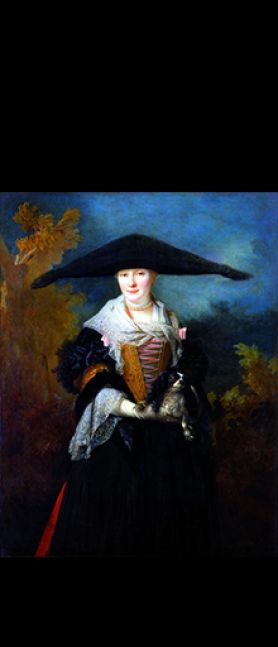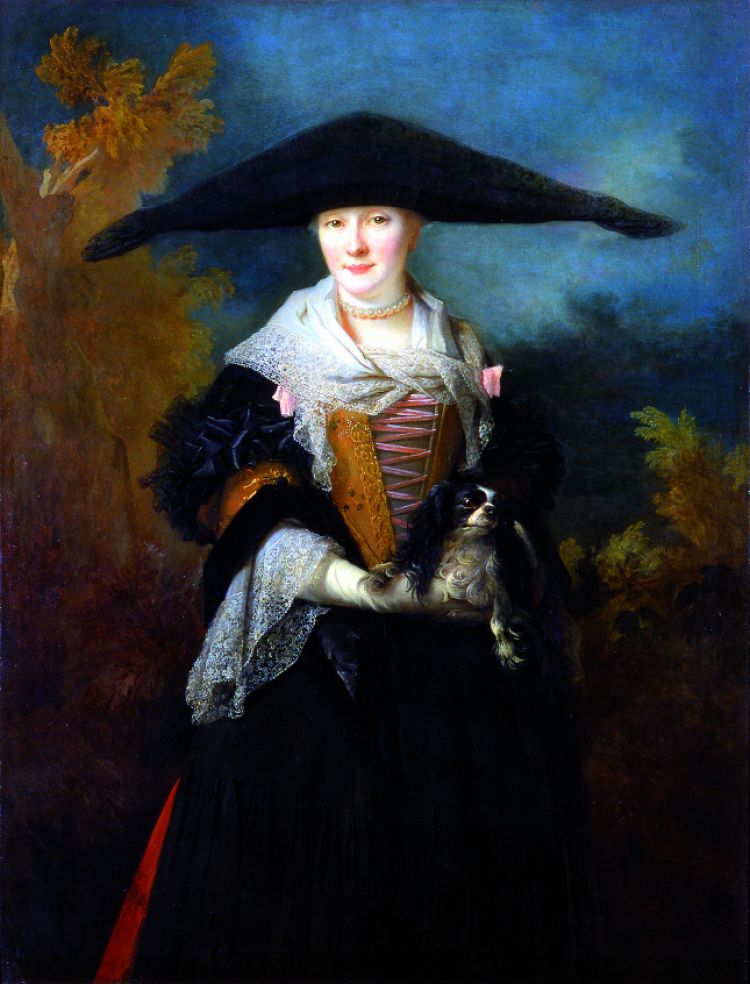La Belle Strasbourgeoise

In the years between 1688 and 1730 the costume you can see here could only have been worn by a Strasbourg aristocrat. In 1681, when Strasbourg was annexed to the Kingdom of France, it aroused real enthusiasm in Paris. And Nicolas de Largillierre, a hatter's son, was certainly fascinated by this incredible hat. La Belle Strasbourgeoise is the artist’s best known work. It is also the most mysterious: who was the model for this famous painting? Largillierre's sister? A Strasbourg lady passing through Paris? An elegant lady from Paris? We still don't know.
As you can see, her hair is hidden beneath her hat. Standing out against the sumptuous fabrics, her face is all the more enigmatic. For once in Largillierre's work, the model is looking at us directly, yet her gaze is gentle. We can feel the intense black of her dress pulsating in the centre of the picture. Skilfully sustained by the surrounding colours, it serves the harmony of the whole. The masterful rendering of the dog - a Cavalier King Charles spaniel - echoes the artist's still lifes – Largillierre was also the author of splendid still lifes.
Trained in Antwerp and later in London, strongly marked by the aesthetics of Van Dyck, Largillierre, together with his rival and friend Rigaud, was the best portrait painter of his time. He made some 1,500 portraits. It was thanks to the tenacity of the curator Hans Haug that La Belle Strasbourgeoise joined the collections of the Musée de Strasbourg. Today it is one of its centrepieces, its Mona Lisa as it were.
